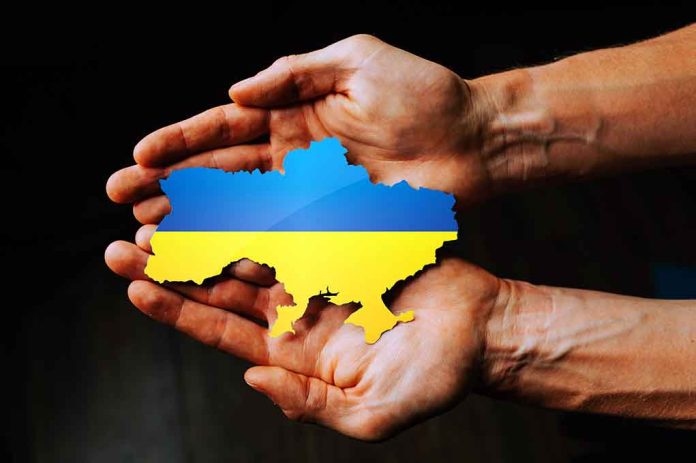
As Ukraine’s military struggles against Russian forces, Western diplomats are pushing for a ceasefire, leaving President Zelensky with difficult choices.
At a Glance
- Ukraine faces significant battlefield setbacks and pressure for ceasefire negotiations
- Western allies show fatigue after two years of providing military and economic aid
- President Zelensky rejects ceding territory or direct negotiations with Russia
- Alternative funding sources and diplomatic efforts are being explored
Mounting Pressure for Ceasefire
The Russia-Ukraine war has been raging for two years, with fighting largely stalled along the front lines. As battlefield setbacks mount for Ukraine, Western diplomats are increasingly pressuring the country’s leadership to consider a ceasefire. This push comes as Western populations grow weary of the continuous financial and military expenditures supporting the conflict.
Ukraine’s 2023 counteroffensive ended with minimal territorial gains and a significant depletion of resources and morale. Meanwhile, Russia has solidified its war economy, gained territory in early 2024, and captured strategic locations like Avdiivka. These developments have led to a growing consensus among some Western officials that a negotiated settlement may be necessary.
Zelensky’s Stance and International Support
Despite the mounting pressure, Ukrainian President Volodymyr Zelensky remains firm in his position. He has consistently rejected the idea of ceding territory to Russia or engaging in direct negotiations. This stance is supported by many who argue that capitulating to Russian aggression would set a dangerous precedent for international security.
However, the reality on the ground is challenging this resolve. Ukraine struggles with mobilizing and training troops, affecting morale and battlefield readiness. The situation is further complicated by the resilience of Russia’s economy and war machine, which have benefited from high energy prices, prudent financial management, and continued trade with non-Western countries.
Western Aid and Alternative Solutions
Ongoing aid packages from the US to Ukraine may provide a temporary reprieve. However, this may not be sustainable in the long term. Western countries face challenges in ramping up defense production and coordinating aid to Ukraine, leading to discussions about alternative funding sources.
Proposals include seizing frozen Russian assets and taxing Western companies doing business in Russia to support Ukraine. Additionally, some suggest exploring Ukraine’s accession to NATO as a stabilizing option, though this may delay regaining some occupied territories.
The Path Forward
As the conflict continues, the international community grapples with finding a resolution that ensures Ukraine’s security and promotes broader stability. Some argue that Ukraine’s best hope lies in a negotiated settlement, while others maintain that victory for Ukraine is essential for saving lives, defending independence, and ensuring European security.
“[O]n the Ukraine question in particular, everybody with a brain in their head knows this was always going to end in negotiation. The idea that Ukraine was going to throw Russia back to the 1991 border was preposterous; nobody actually believed it…So what we’re saying to the president and really to the entire world is you need to articulate what the ambition is. What is $61 billion [in additional aid to Ukraine] going to accomplish that $100 billion hasn’t?” asked Lauren Sforza.
As Western diplomats continue to push for a ceasefire, the coming months will be crucial in determining the future trajectory of the conflict. The challenge remains to find a solution that addresses the security concerns of all parties involved while maintaining the sovereignty and territorial integrity of Ukraine.







